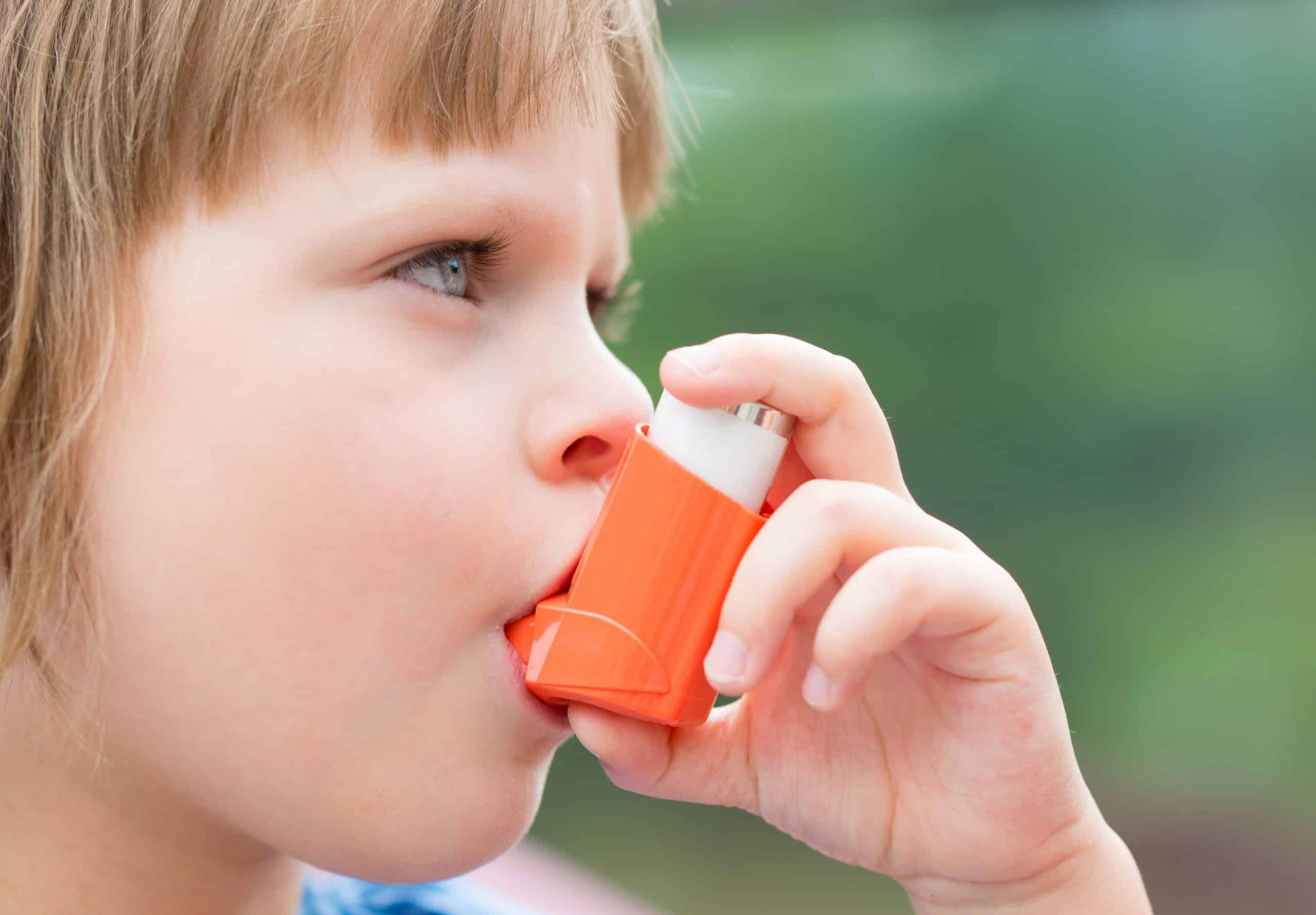What is wheezing?
Wheezing is a high-pitched whistling sound made while you breathe. Wheezing is caused by inflammation of the small airways and can have a variety of different underlying causes. In children, the most common cause of wheezing is a viral illness.
How is wheezing treated?
Even if your child does not have asthma, they can still be treated for wheezing. We might prescribe inhaled medications, called bronchodilators to see if the symptoms improve. Bronchodilators work by relaxing the smooth muscle in the airways allowing tight airways to relax and increase air entry. These medicines are safe in infants and can often improve your child’s breathing. Often we will trial these medications in the office to see if they help your child. If they do, then we will provide you with a prescription for at home use.
How do I give my child these medications?
Medications for wheezing work by going directly into the airway. These medications can be delivered via nebulizer or via an inhaler. If your child uses an inhaler they must always use a spacer to ensure the medication gets into the lungs and not just in the mouth.
Check out these helpful videos about use of mask and spacer in children:
What Is Bronchiolitis?
Bronchiolitis is an inflammation of the small airways that results from a viral infection. Many viruses can cause bronchiolitis. The infection affects the tiny airways called bronchioles. The airways swell, making breathing difficult. Infants are often affected because their airways are small and can become more easily blocked.
Does My Child Have Asthma?
It’s important to remember that one instance of wheezing isn’t enough to diagnose asthma. It must happen on multiple occasions. Less than one third of all infants who wheeze on a recurring basis during their first 3 years continue to wheeze. Most kids who wheeze as infants outgrow it and don’t have asthma when they get older. A child’s risk of asthma is higher if he or she has an allergy, such as a food allergy or hay fever, or one or both parents have asthma, allergies or eczema.
What Exactly Is Asthma?
Asthma is a disorder caused by inflammation in the airways that lead to the lungs. This inflammation causes airways to tighten and narrow, making it difficult to breathe. Symptoms include wheezing, breathlessness, chest tightness, and cough particularly at night or after exercise/activity. The inflammation may be completely or partially reversed with medicines.
Is There a Test to Determine If My Child Has Asthma?
There is no single test for asthma; however, we can diagnosis it by taking a patient’s history, performing a physical examination and conducting pulmonary function tests. Pulmonary function tests can be used to aid in the diagnosis, but are unreliable in children under 5 years old. In the office we can perform breathing tests using a spirometer, a machine that measures the amount of air that flows in and out of the lungs. It can detect whether the airflow is less than normal, and it can also detect if the airway obstruction is involving only small airways or larger airways too. After the spirometer reading, we may give your child an inhaled medication that opens the airways and then take another reading to see if breathing improves with medication. If the medication reverses airway obstruction, as indicated by improved airflow, then there’s a stronger possibility that the child has asthma.
Are There Triggers for Asthma?
Asthma triggers can differ from person to person. Some common triggers are exercise, allergies, viral infections, and smoke. When a child with asthma is exposed to a trigger, their already sensitive airways become inflamed, swell up, and fill with mucus. In addition, the muscles lining the swollen airways tighten and cause difficulty breathing.
My child has been diagnosed with asthma what are the different types of medications available?
The goal of asthma therapy is to prevent your child from having chronic symptoms. This includes: maintaining your child’s lung function as close to normal as possible, allowing your child to maintain normal physical activity levels, and preventing recurrent asthma attacks and/or emergency department visits and hospitalizations. We also want your child to be on a medication that gives the best results with the least side effects. In general, we will start with a high level of therapy following an asthma attack and then decrease treatment to the lowest possible level while still prevents asthma attacks and allowing your child to have a normal life.
There are two types of medications used primarily to treat asthma.
Asthma Rescue Medications
These medications are used when your child has an acute asthma attack. These medications are called bronchodilators and have the trade names Albuterol, Ventolin or Xopenex. These medications relax the smooth muscle in the small airways improving your child’s ability to breathe. These medications are meant to be used for short periods of times. If your child is requiring rescue medications multiple times per month they may need a controller medication.
Asthma Controller Medications
The underlying problem in asthma involves a chronic inflammation of the small airways. Some children require a daily medication to help prevent multiple asthma attacks. Typically, these medications are an inhaled steroid. These medications work by attacking the underlying chronic inflammation. They are inhaled so they act at the levels of the airway and are not absorbed into the body in large quantities.
How can I determine if my child’s asthma is well controlled?
The good news is that in most children asthma can be well controlled with the appropriate medications. For most families, the learning process is the hardest part of asthma management. Asthma can take a little time and energy to manage so don’t be discouraged if your child has some flare ups along the way.
Every child with asthma needs an individualized asthma management plan to control symptoms and flares. We will work closely with you to help manage your child’s asthma.
This includes:
Identifying and Controlling Asthma Triggers
Triggers are things that exacerbate your child’s asthma. Each child can have unique set of triggers. Some common triggers are allergens, viral infections, irritants, exercise, breathing cold air, and weather changes. It can take some time to figure out what your child’s triggers are. Keep a record of your child’s breathing and night time cough. This can help us to identify and try and prevent some of your child’s asthma triggers.
Asthma Medications
It is important for your child to take their medications as prescribed. Asthma medications can be confusing, if you are not sure what your child should be taking please ask us to review the medications with you. It may take a little trial and error in the beginning to determine what the best medication for long term asthma control is in your child.
Review and Reassessment of Asthma Control
We will closely follow your child to determine whether their asthma is well controlled. This may include office visits and/or the use of breathing tests (spirometry). As always we are here to help and guide you through this process. Call us with questions or concerns.
Remember that any child with asthma can still have an occasional asthma attack particularly during the period right after diagnosis or after exposure to a very strong or new trigger.




